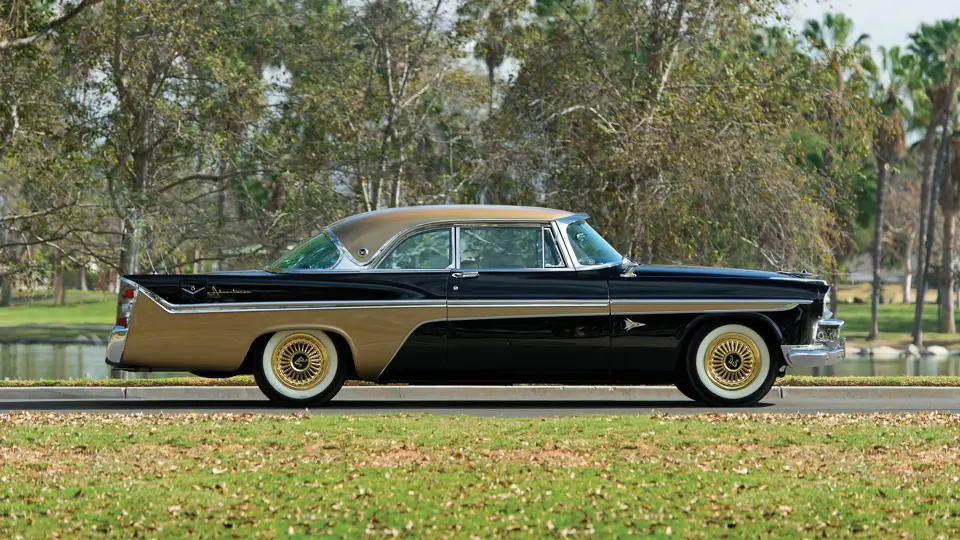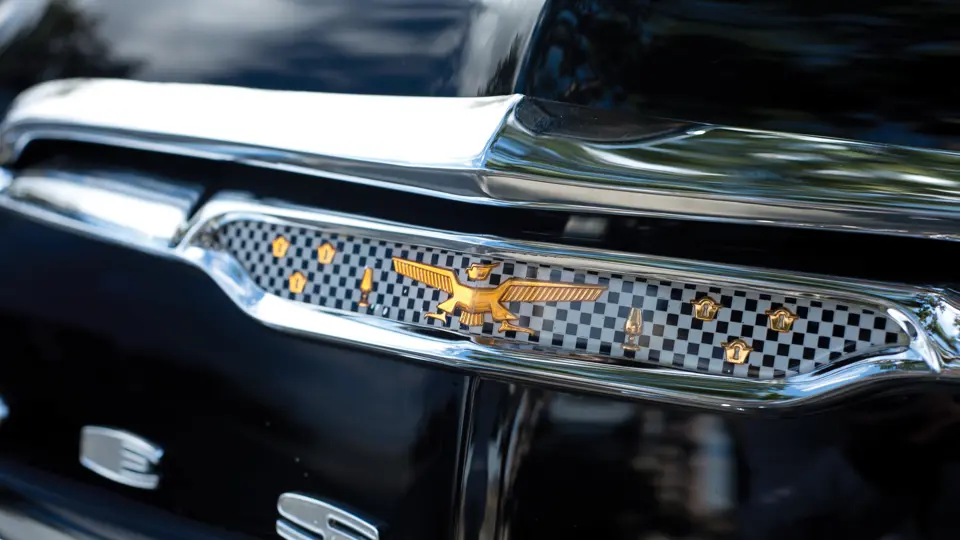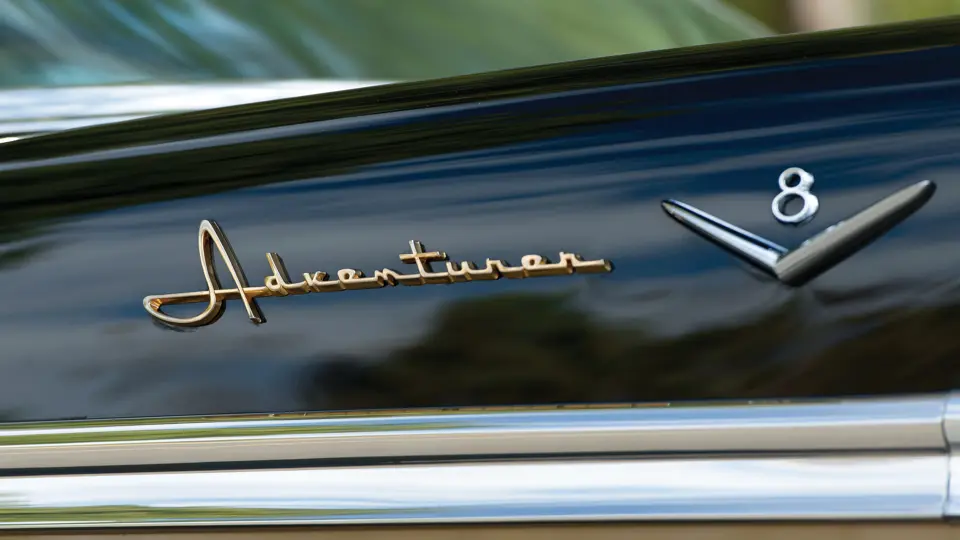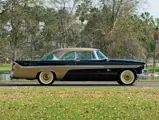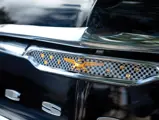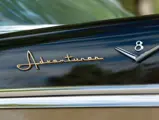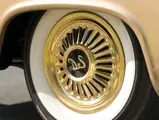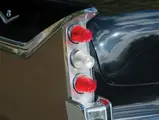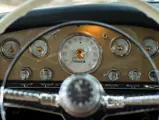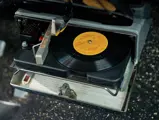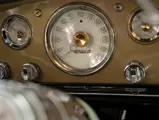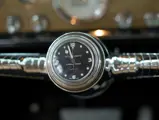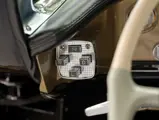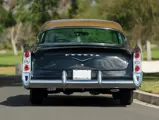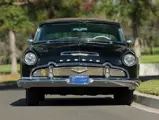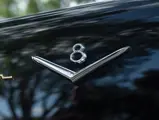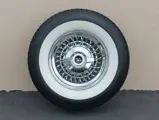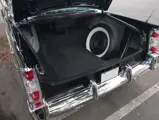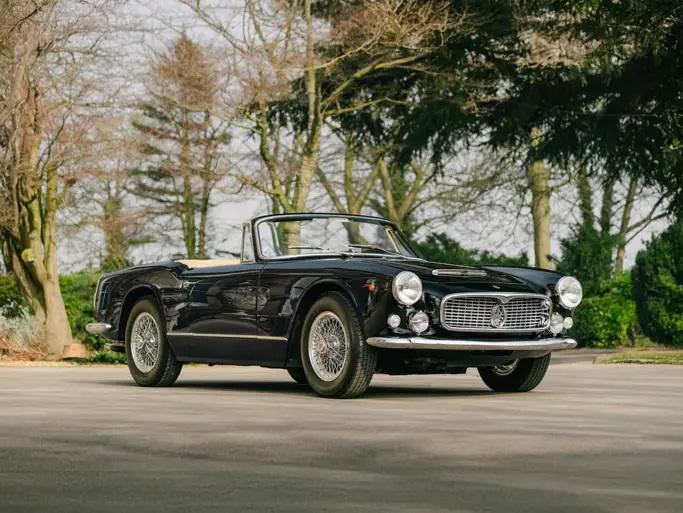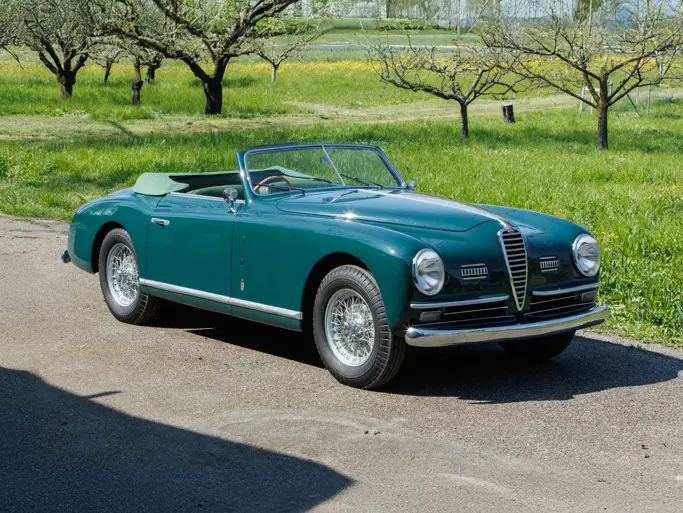320 bhp, 341.4 cu. in. Hemi V-8 engine with dual four-barrel carburetors, Powerflite pushbutton automatic transmission, coil-spring independent front suspension, live rear axle with semi-elliptic leaf springs, and power four-wheel drum brakes. Wheelbase: 126 in.
The 1956 DeSoto Adventurer's new image backed its sizzle with sinew, which was in the form of 320 brake horsepower. The “Golden Adventurer,” as it was called, was the only DeSoto to have dual four-barrel carburetors and to come standard with a dual exhaust. Its performance was spectacular, reaching 137 mph at Daytona and 144 mph at the Chrysler Proving Grounds. A stock Adventurer was selected as the pace car for the 1956 Pikes Peak International Hill Climb, and five Firedome Convertibles were outfitted with Adventurer trim for use as pace cars for the 1956 Indianapolis 500.
Among the Adventurer's few other options were a self-winding Benrus clock in the steering-wheel hub, a gasoline-fired interior heater that could reach 100 degrees in 15 seconds, and Chrysler's new Highway Hi-Fi, a compact phonograph that mounted under the dash and played special 16⅔-rpm discs.
In 2005, chassis number 50385933 was discovered in Boise, Idaho, in the backyard of its original owner, Orville K. Wall. It was complete and undamaged and had only covered 53,000 original miles at that time. The exterior restoration was performed by paint and body specialist Dave McLaughlin, of Dana Point, California, while John Edwards at Costa Mesa R&D Automotive Machine rebuilt the engine. Theo Sahli, a restoration specialist also from Costa Mesa, restored, tested, and tuned the drivetrain. All of the chrome was replated to a very high quality, and the stainless trim was polished to the same degree by Sihilling Metal Polishing, of Santa Ana, California. MoPar specialist Gary Goers was an invaluable source for correct trim items, such as weather stripping, felt, and rubber. Doug Dressler, who had purchased all of the unique NOS Adventurer vinyl and fabric material from Chrysler, provided the upholstery material for the seats, door panels, and carpeting.
This example comes equipped with eight-way power seats, power windows, air conditioning, a pushbutton Station Finder radio, and a twin adjustable radio antenna mounted on the rear fenders. It is also equipped with a Benrus eight-day self-winding Desotomatic clock, which is mounted on the steering wheel, as well as the Highway HiFi 16⅔-rpm record player under the dash, which is accompanied by eight original records. Mounted on the car are its original steel wheels with unique gold-plated wheel discs, on which are mounted bias-ply whitewalls; the car is also accompanied by a set of Kelsey-Hayes wire wheels, which are mounted with a set of modern radial tires, making it equally suited for showing or comfortable driving.
The sale of this car is accompanied by receipts for all work carried out, as well as other documentation, including the service manual, a maintenance manual, and factory bulletins.
The Adventurer’s restoration was completed in 2010, and the car has been shown at a number of local West Coast concours events, winning accolades at nearly every one. It also traveled to the Amelia Island Concours in March 2014, where it was honored with the Amelia Award for outstanding presentation.
With wonderful character and an award-winning restoration, this Desoto Golden Adventurer remains one of the sharpest looking closed cars of Exner’s Forward Look era.
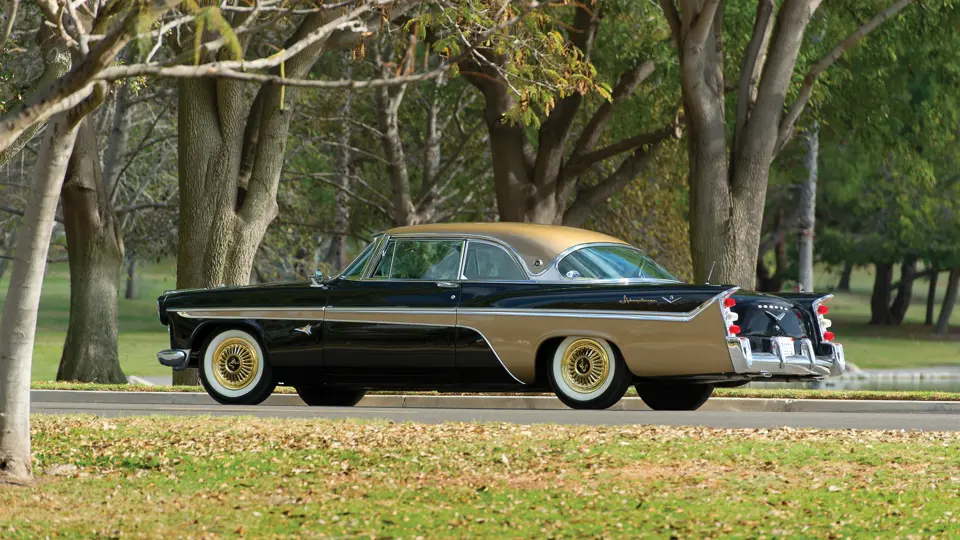




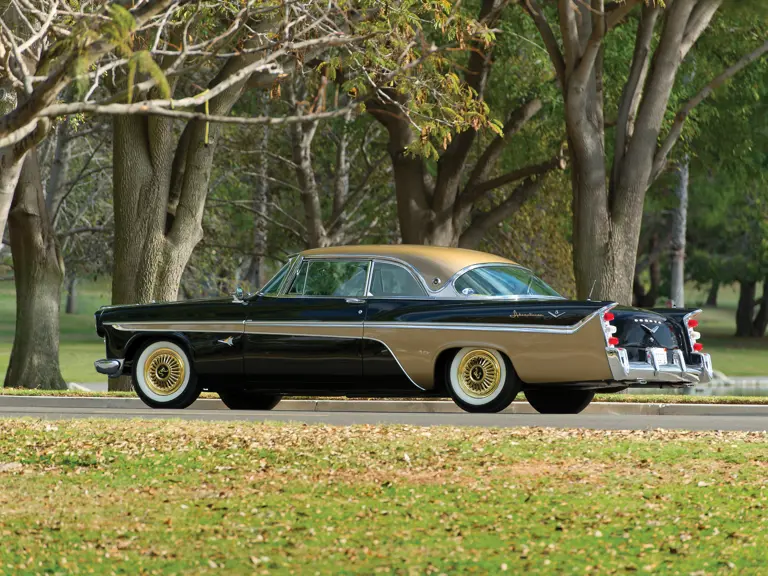

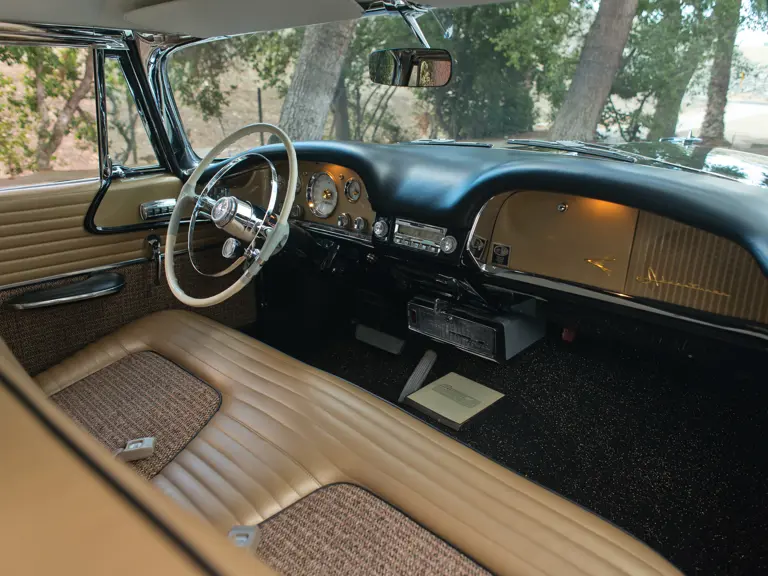
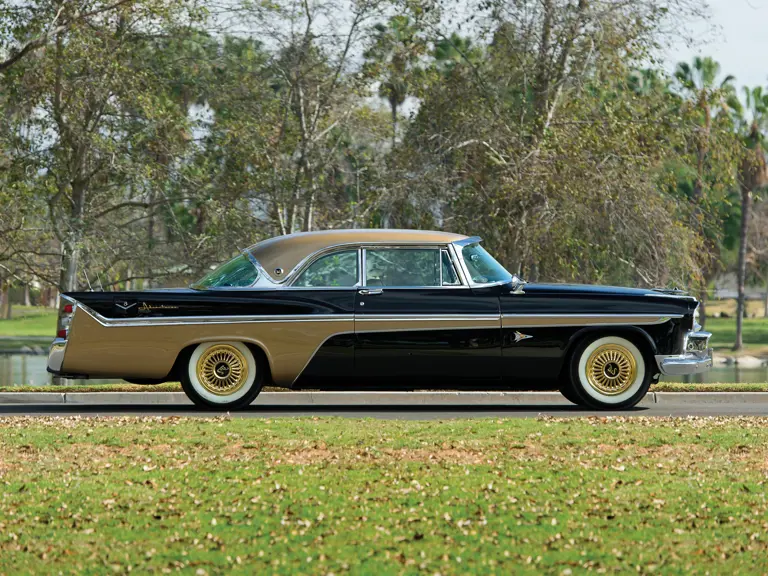

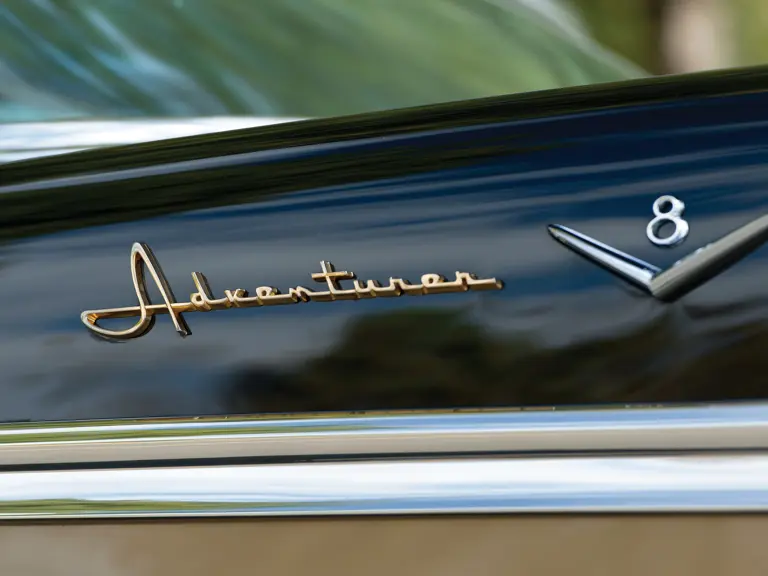
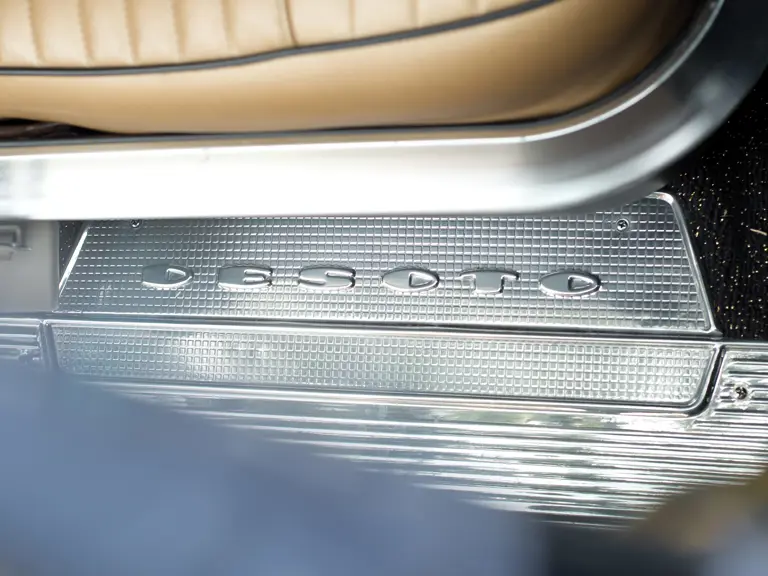

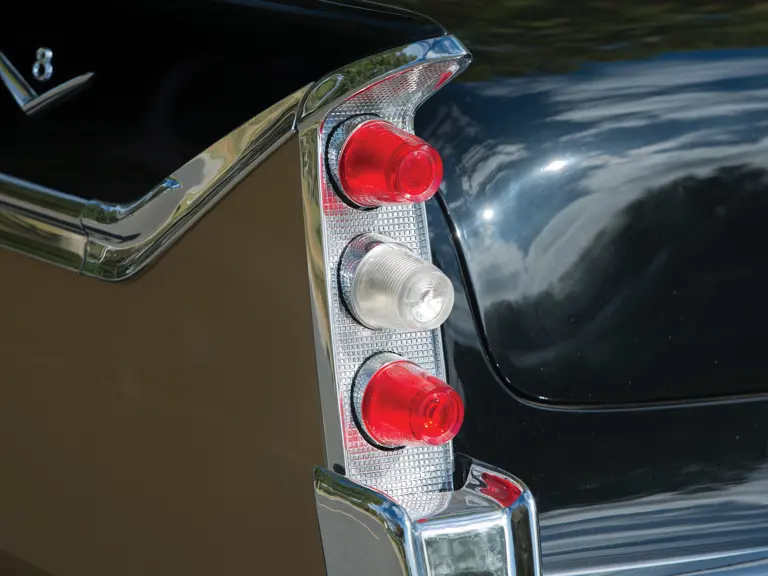
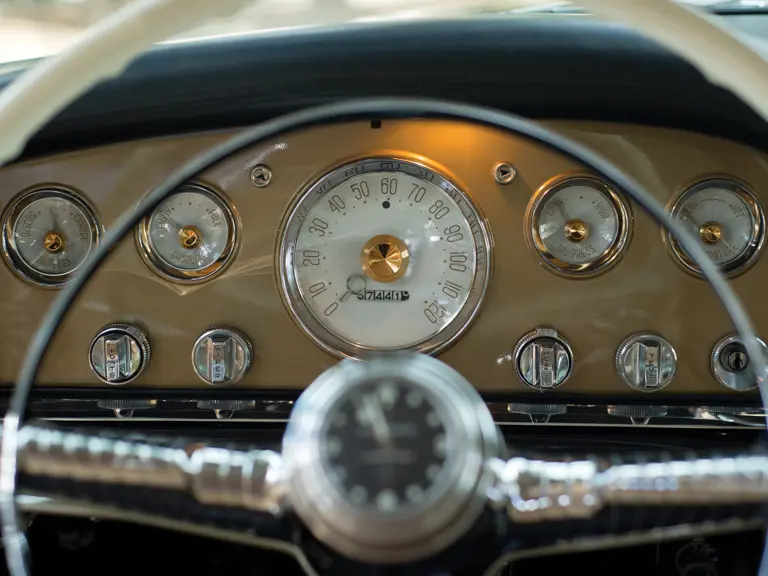


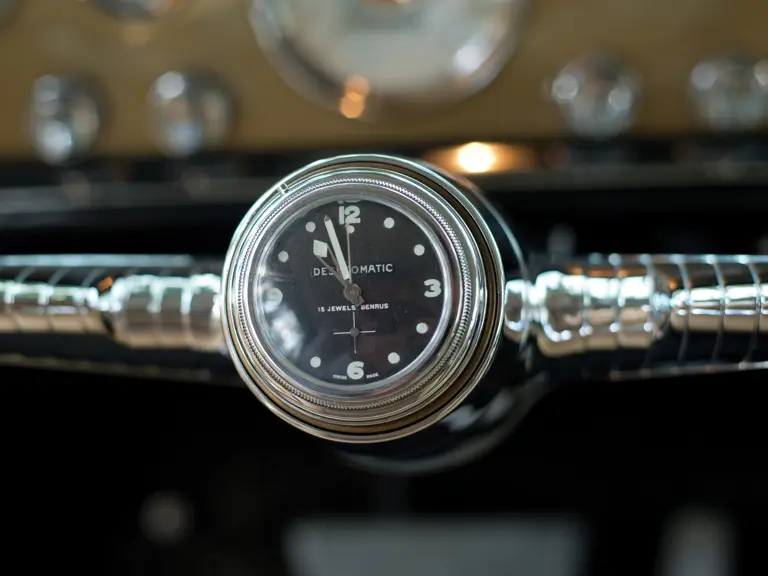
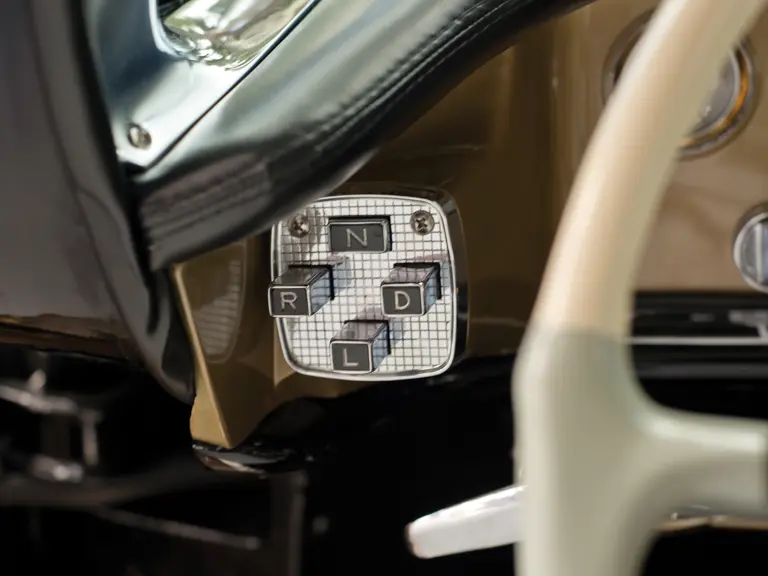
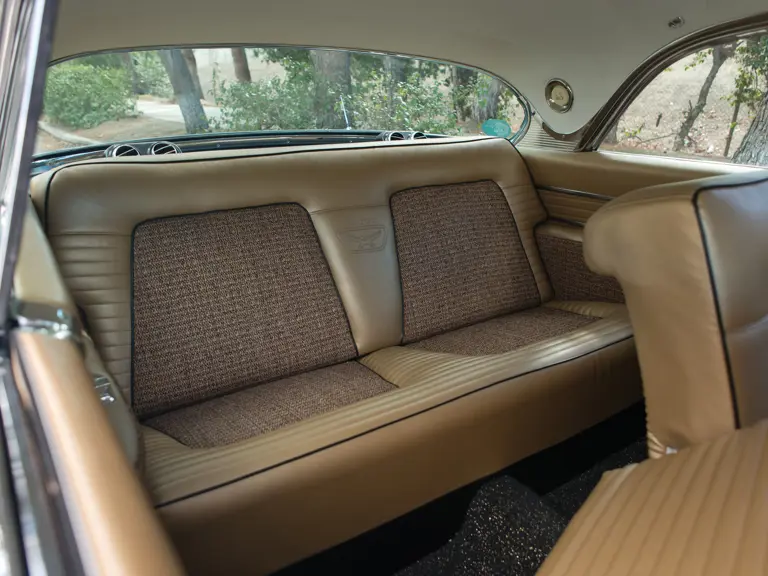
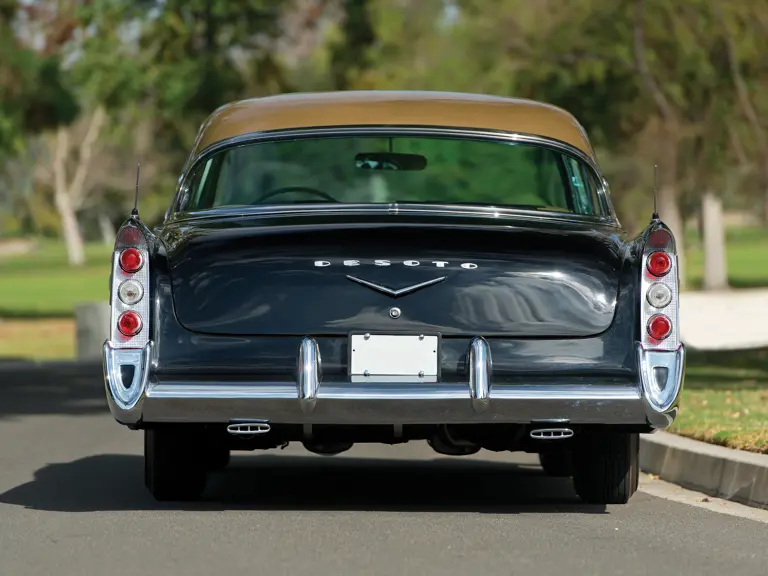
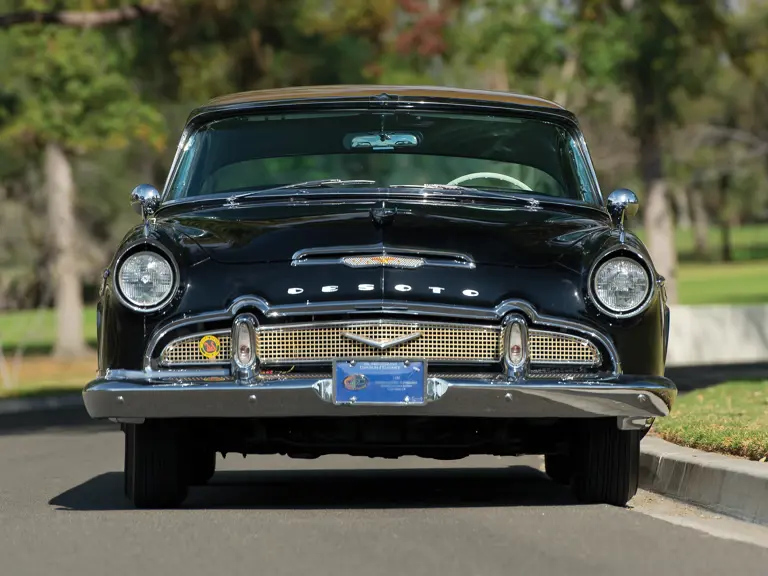
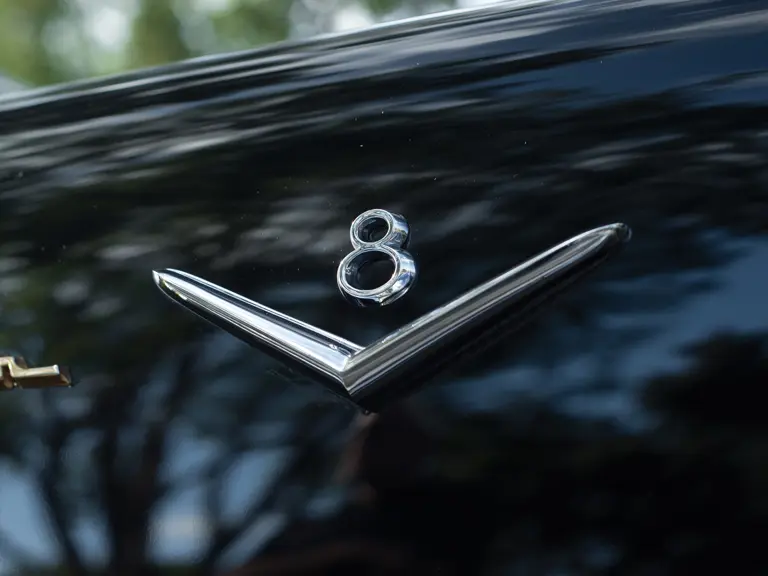
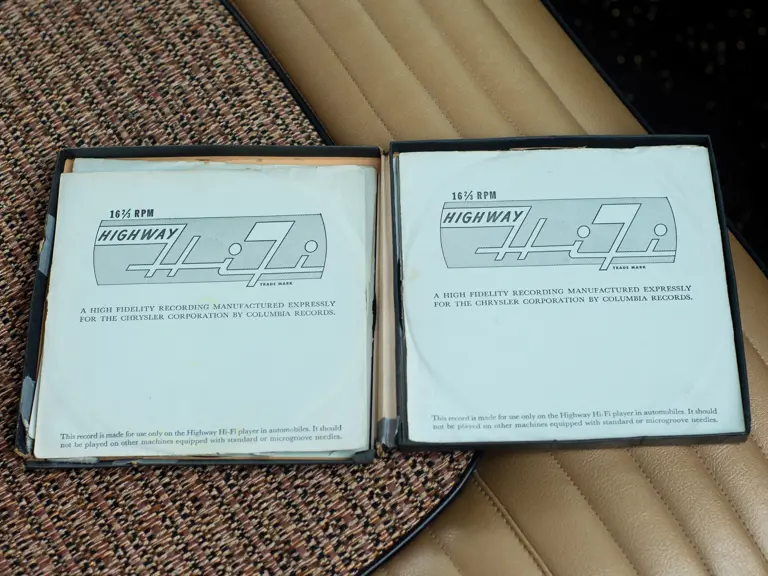
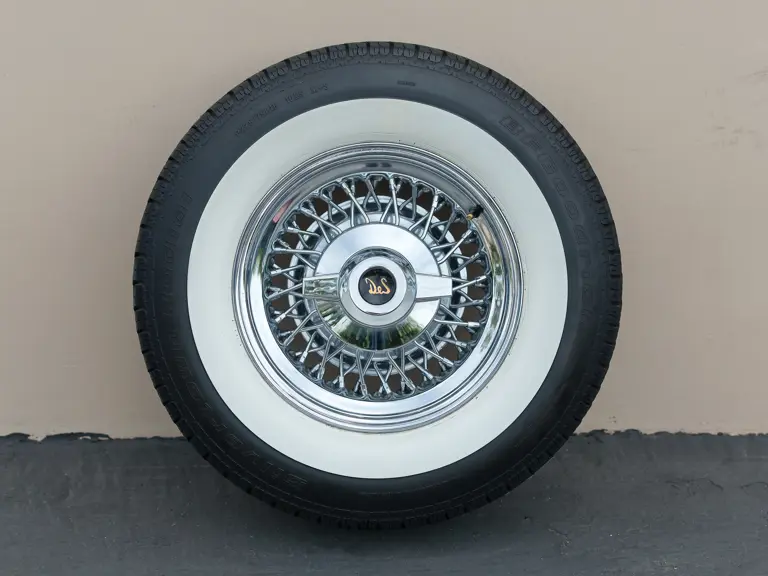

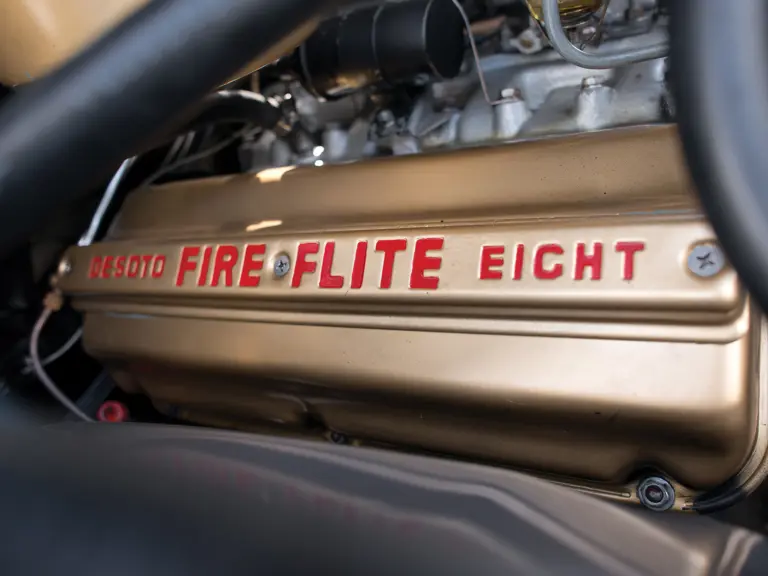
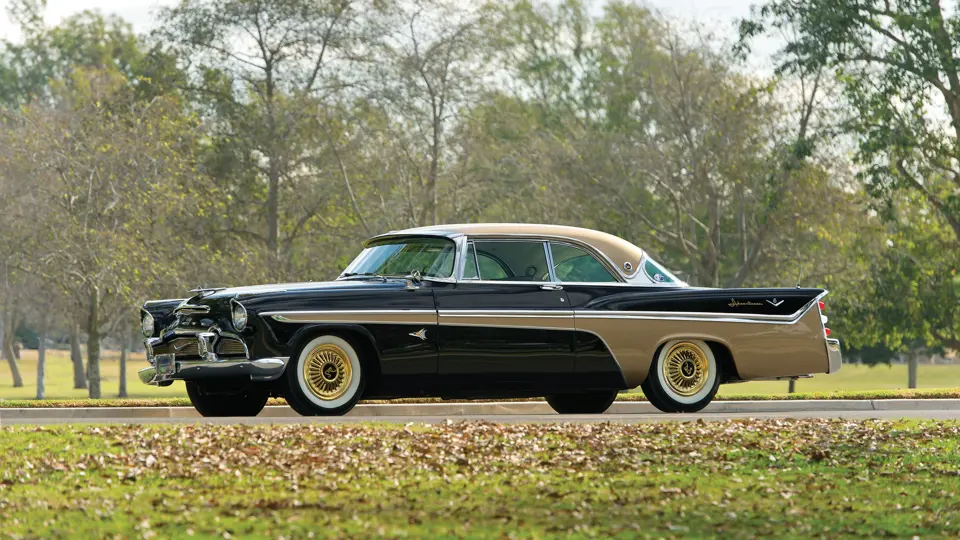
 | Phoenix, Arizona
| Phoenix, Arizona
